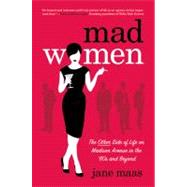
JANE MAAS began her career at Ogilvy & Mather as a copywriter in 1964 and rose to become a creative director and agency officer. Ultimately, she became president of a New York agency. A Matrix Award winner and an Advertising Woman of the Year, she is best known for her direction of the “I Love New York” campaign. She is the author of Adventures of an Advertising Woman and co-author of the classic How to Advertise, which has been translated into 17 languages.
“This book of Jane’s is hilarious but so real that anyone infatuated with Mad Men and anyone interested in a future in advertising must buy it and learn a lot while laughing. There have been many books on advertising. . . . But I have never read one that paints as honest and intimate and lively a picture of life in an agency at this important time in advertising history. . . .You can see I liked it a lot.”
-- Mary Wells Lawrence, author of A Big Life (In Advertising) and founding president of Wells Rich Greene
“I think of Jane Maas as a real-life Peggy Olsen. When I started at Ogilvy & Mather in 1971, a lowly Account Executive, she was already a creative director. She took me under her wing and taught me a lot about creative work that sells. Mad Women made me laugh. It also made me nostalgic for those legendary days when David Ogilvy roamed the corridors exhorting us all to come up with BIG IDEAS. And the book made me think again about working women. Jane reminds us that the challenge of being a good wife, a nurturing mother and a successful professional, all at the same time, still remains. In this respect, we are all Mad Women.”
– Shelly Lazarus, chairman of Ogilvy & Mather Worldwide
"In the Mad Men TV show, the males are depicted as shtupping their secretaries as they drink and smoke themselves to death, with nary a female copywriter in sight. In this damn funny book, the talented Jane Maas, who lived through those days of struggle and sometimes humiliation, tells it like it really was."
–George Lois, legendary ad man
“The funniest book I’ve read since From Those Wonderful Folks Who Gave You Pearl Harbor.”
-- Jerry Della Femina, author of the best-selling From Those Wonderful Folks who Gave You Pearl Harbor
“Truth is more fascinating than fiction. Maas tells the fascinating truth about mad men and the women in their boardrooms and bedrooms who juggled work, husbands and children successfully – and had as much fun doing it as you will reading about it.”
– Anne Tolstoi Maslon, former ad woman and author of Women’s Work, Private Scores, and Trials
“I thought I knew a lot about the advertising business, but Jane Maas gives us a unique peephole into the inner workings of Madison Avenue. Mad Women is a candid insider’s view of the women--and men--who made modern advertising and what drove them. Great reading.”
-- Bob Liodice, CEO, Association of National Advertisers
“Jane Maas nails the story of the early “mad women” in advertising. I know. I lived the story at two different agencies. Yes, there was all of that sex at the office. Yes, there were three-martini lunches – sometimes with a chaser of brandy or crème de menthe or drambuie. (I still have a headache.) But would I do it all over again? Absolutely. Those years were a gas, captured perfectly by Jane Maas’s funny and bittersweet book.”
--Linda Bird Francke
The New copy of this book will include any supplemental materials advertised. Please check the title of the book to determine if it should include any access cards, study guides, lab manuals, CDs, etc.
The Used, Rental and eBook copies of this book are not guaranteed to include any supplemental materials. Typically, only the book itself is included. This is true even if the title states it includes any access cards, study guides, lab manuals, CDs, etc.